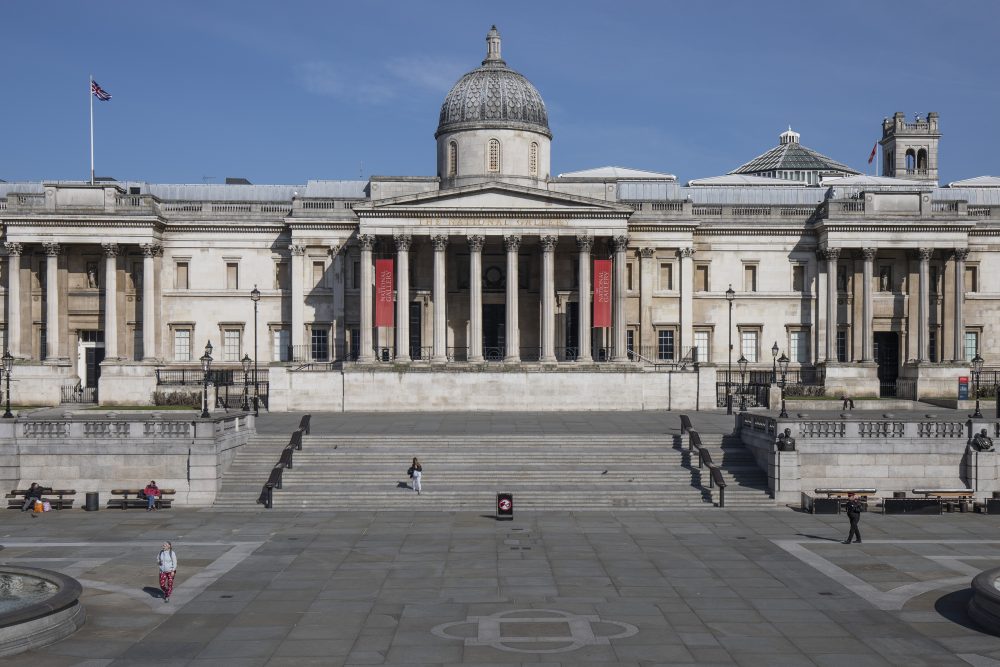The National Gallery has announced its plans for a £400m extension, for which it has already raised £375m. The new building will house paintings from the late 19th century and, in a radical shift in the museum’s approach to collecting, across the 20th century. In 1996 the National Gallery agreed with the Tate that stated that its own collection would not include works from after 1900. Gabriele Finaldi, director of the National Gallery, told the Art Newspaper that this boundary ‘looks more and more artificial as time passes’ and, in an interview with the New York Times, said that ‘1900 is a long, long time ago, and we’re very conscious that painting didn’t stop then; there’s a desire to continue telling that story’. Trustees from both museums recently held a joint meeting and set up a working group to ‘further the national collection as a whole’. Finaldi is hoping to have an agreement with the Tate in place by the end of this year and, for what is called ‘Project Domani’, is envisaging a collection of modern art from around the world that begins with French Impressionism and extends to the end of the 20th century. Of the funds already raised for the new wing, £150m has been pledged by Crankstart, a foundation established by the venture capitalist Michael Moritz and his wife Harriet Heyman, and £150m by the Julia Rausing Trust, established by the Tetra Pak heir Hans Kristian Rausing and his late wife, Julia Delves Broughton. The new wing will replace St Vincent House, a 1960s building next to the Sainsbury Wing that has been owned by the National Gallery since 1998 and is currently leased to a Thistle Hotel. This building is scheduled for demolition and the new wing is due to open in the early 2030s.
Officials have evacuated archaeological artefacts from a storehouse in Gaza ahead of an Israeli air strike, the Guardian reports. On 10 September Israeli authorities ordered the École Biblique et Archéologique Française de Jérusalem (EBAF) to evacuate its storehouse in a residential tower in Gaza City that Israel was planning to strike. The storehouse contained three decades’ worth of finds from Gaza’s five main archaeological sites, including the Saint Hilarion monastery, a UNESCO-listed site that dates back to the fourth century. Sources told AFP that French authorities, UNESCO and the Latin Patriarchate of Jerusalem helped convince the Israeli authorities to stay the bombing while the artefacts were being removed. According to UNESCO, 110 cultural heritage sites in Gaza have been damaged since October 2023.
The manuscript dealer Gérard Lhéritier has gone on trial in Paris, charged with fraud. In 2015 prosecutors accused Lhéritier of creating a pyramid scheme using his valuable collection of manuscripts as an underlying asset. Through his company, Aristophil, he set up a shared ownership scheme that allowed investors to buy into the collection, which comprised 135,000 items and included André Breton’s two Surrealist manifestos and the Marquis de Sade’s manuscript for 120 days of Sodom. Libération reports that some 18,000 clients invested in the scheme. Prosecutors allege that the victims have lost more than €1bn in total. At the height of his success Lhéritier made major donations to institutions and helped finance the French National Archive’s acquisition of the archives of Michel Foucault. The trial is expected to end on 3 October.
Ralph Rugoff will step down as director of the Hayward Gallery in the spring of 2026 after 20 years in the role, the Southbank Centre announced on 10 September. During his tenure Rugoff curated 23 exhibitions, including ‘When Forms Come Alive’ in 2023 and surveys of the work of artists such as Ed Ruscha, Tracey Emin and Yinka Shonibare. Rugoff also curated the Venice Biennale in 2019, and received an OBE that year for services to the arts. After leaving the Hayward he will work as an independent curator and writer. The gallery will begin the search for his replacement later this year.
Simon Baker is no longer the director of the Maison Européenne de la Photographie (MEP) in Paris. The museum announced his departure in a brief statement on 9 September. Baker, who has led the MEP since 2018, joined from Tate Modern, where he was chief curator of photography. The circumstances surrounding his departure from the MEP are unclear. Photography magazine Blind reports that Baker’s contract had only just been renewed, while Le Monde states that his tenure ‘ended with a dismissal’, adding that the MEP’s general administrator Caroline Miller said that the board of directors had ‘unanimously decided to end [the] collaboration’. Baker was the subject of an internal investigation into workplace harassment at the MEP in 2024, a year in which several employees resigned.
A long-lost painting of the Crucifixion by Rubens has been discovered in a French mansion, Le Monde reports. The French auctioneer Jean-Pierre Osenat found Christ on the cross (1613) in September 2024 in a home in Paris that he was preparing to sell. The work has been authenticated by the Rubens scholar Nils Büttner, chair of the Centrum Rubenianum in Antwerp. Osenat told AFP that it represents ‘a true profession of faith’ and ‘the very beginning of baroque painting’. The painting is thought to have once belonged to the French academic painter William-Adolphe Bouguereau. Osenat’s auction house, which bears his name, will put the work up for sale on 30 November.
